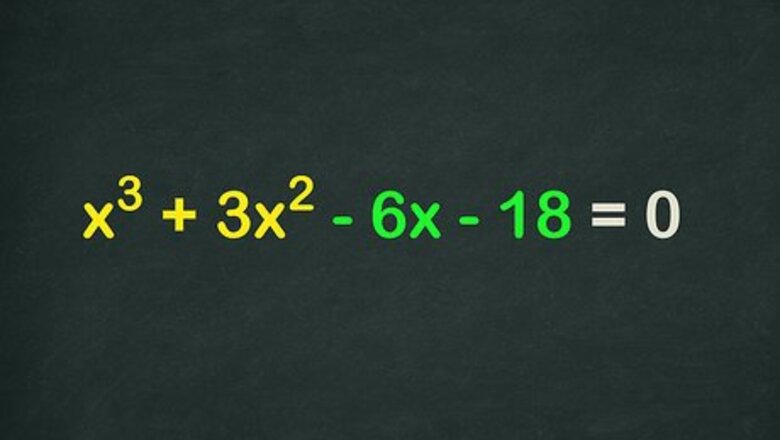
views
Factoring By Grouping
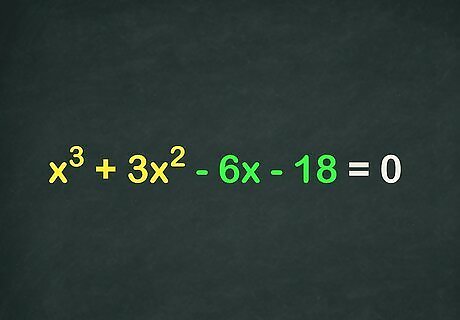
Group the polynomial into two sections. Grouping the polynomial into two sections will let you attack each section individually. Say we're working with the polynomial x + 3x - 6x - 18 = 0. Let's group it into (x + 3x) and (- 6x - 18)
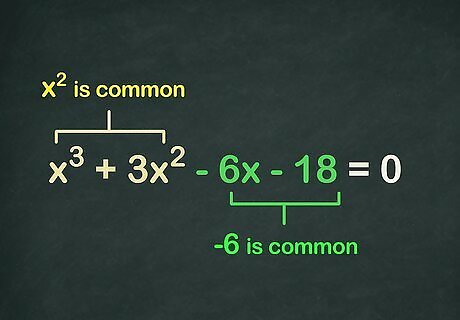
Find what's the common in each section. Looking at (x + 3x), we can see that x is common. Looking at (- 6x - 18), we can see that -6 is common.

Factor the commonalities out of the two terms. Factoring out x from the first section, we get x(x + 3). Factoring out -6 from the second section, you'll get -6(x + 3).
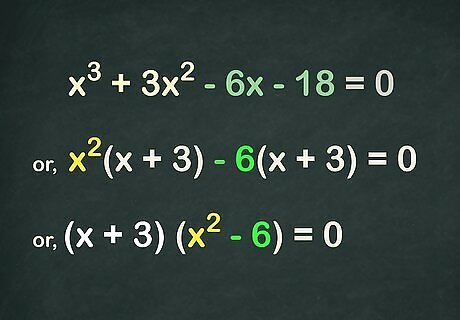
If each of the two terms contains the same factor, you can combine the factors together. This gives you (x + 3)(x - 6).
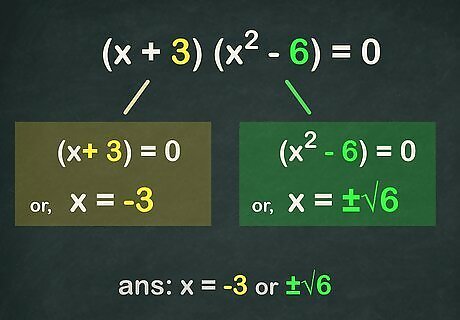
Find the solution by looking at the roots. If you have an x in your roots, remember that both negative and positive numbers fulfill that equation. The solutions are -3, √6 and -√6.
Factoring Using the Free Term
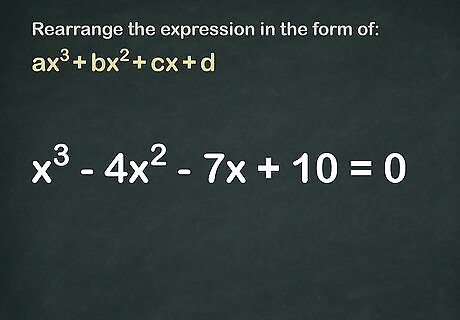
Rearrange the expression so it's in the form of ax+bx+cx+d. Let's say you're working with the equation: x - 4x - 7x + 10 = 0.
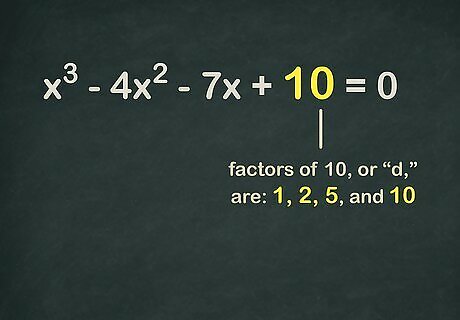
Find the all of the factors of "d". The constant "d" is going to be the number that doesn't have any variables, such as "x," next to it. Factors are the numbers you can multiply together to get another number. In your case, the factors of 10, or "d," are: 1, 2, 5, and 10.
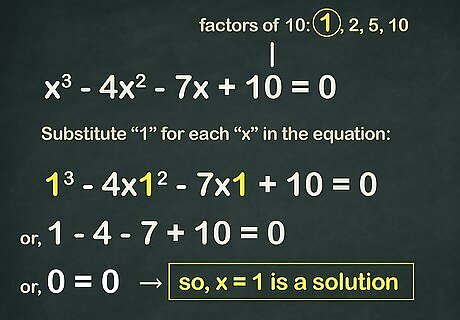
Find one factor that causes the polynomial to equal to zero. We want to determine which factor makes the polynomial equal zero when we substitute the factor for each "x" in the equation. Start by using your first factor, 1. Substitute "1" for each "x" in the equation: (1) - 4(1) - 7(1) + 10 = 0 This gives you: 1 - 4 - 7 + 10 = 0. Because 0 = 0 is a true statement, you know that x = 1 is a solution.
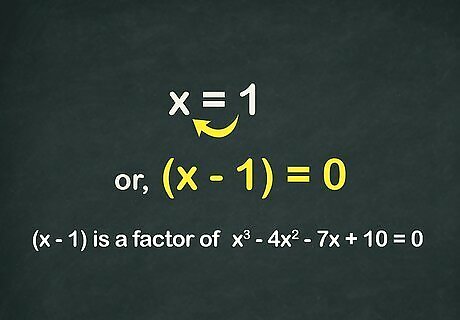
Do a little rearranging. If x = 1, you can rearrange the statement to look a bit different without changing what it means. "x = 1" is the same thing as "x - 1 = 0" or "(x - 1)". You've just subtracted a "1" from each side of the equation.
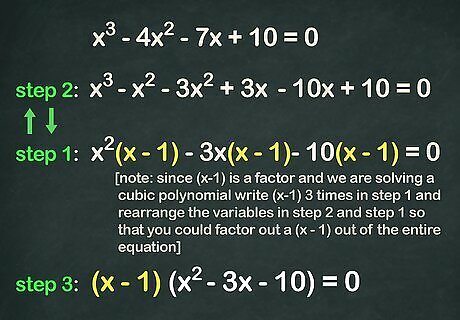
Factor your root out of the rest of the equation. "(x - 1)" is our root. See if you can factor it out of the rest of the equation. Take it one polynomial at a time. Can you factor (x - 1) out of the x? No you can't. But you can borrow a -x from the second variable; then factor it: x(x - 1) = x - x. Can you factor (x - 1) out of what remains from your second variable? No, again you can't. You need to borrow another little bit from the third variable. You need to borrow a 3x from -7x. This gives you -3x(x - 1) = -3x + 3x. Since you took a 3x from -7x, our third variable is now -10x and our constant is 10. Can you factor this? You can! -10(x - 1) = -10x + 10. What you did was rearrange the variables so that you could factor out a (x - 1) out of the entire equation. Your rearranged equation looks like this: x - x - 3x + 3x - 10x + 10 = 0, but it's still the same thing as x - 4x - 7x + 10 = 0.
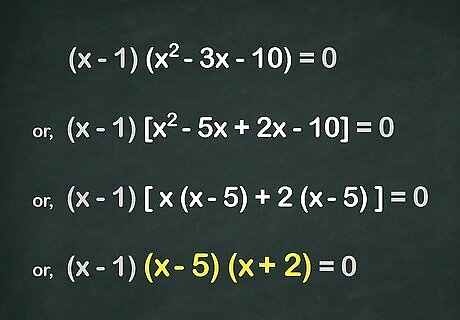
Continue to substitute by the factors of the free term. Look at the numbers that you factored out using the (x - 1) in Step 5: x(x - 1) - 3x(x - 1) - 10(x - 1) = 0. You can rearrange this to be a lot easier to factor one more time: (x - 1)(x - 3x - 10) = 0. You're only trying to factor (x - 3x - 10) here. This factors down into (x + 2)(x - 5).

Your solutions will be the factored roots. You can check whether your solutions actually work by plugging each one, individually, back into the original equation. (x - 1)(x + 2)(x - 5) = 0 This gives you solutions of 1, -2, and 5. Plug -2 back into the equation: (-2) - 4(-2) - 7(-2) + 10 = -8 - 16 + 14 + 10 = 0. Plug 5 back into the equation: (5) - 4(5) - 7(5) + 10 = 125 - 100 - 35 + 10 = 0.

















Comments
0 comment